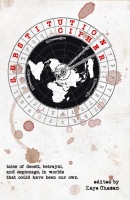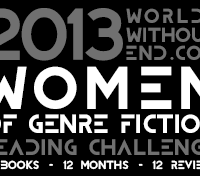Ages ago, back in 2012, I started a series of posts concerning outsiders in fiction. It’s a topic that continues to interest me, so today, I’m back at it. This time, my thoughts are about a character created by Clint Eastwood back in the 1960s.
Okay, just to be clear, I’m not going to be talking about Clint Eastwood as himself.

Anti-hero to the bitter end, eh, Clint?
That guy up there being an ass, or possibly a paid mole (and if he is, awesome, and pardon my calling him an ass), is not the subject of discussion today.
I want to talk about this guy. The Man with No Name.

Or the Man with Three Names, Just Not a Regular One, unless you count Joe as a regular name, which we’re not. Otherwise, it would screw up the whole Man with No Name thing.
I’ve been tinkering with this post for the bulk of January now. Our hero is indeed an outsider in all three films. No question there. But a hero? Not so much, except for in the first movie. The more I’ve thought about it1, the more I’ve concluded that the Man with No Name doesn’t really fit my definition of outsider hero, except for–like I said–in the first film in the trilogy. In the other two, he is far more mercenary and out for his own interests throughout, the complete anti-hero: relatively good in The Good, the Bad, & the Ugly and in the case of For a Few Dollars More, a complete dick.
Here’s that Outsider hero definition again:
A person who isn’t part of the society that he or she finds him/herself in, but saves the day or has an influence in how people change their way of thinking.
Do I still have a post worth writing then? Well, let me ramble on a while and we’ll see what we end up with.
As mentioned above, the Man with No Name appears in three films: A Fistful of Dollars (1964), For a Few Dollars More (1965), and The Good, The Bad, and the Ugly (1966). These films are considered a very loose trilogy. There is even some argument as to whether Eastwood is playing the same character in all three. I like to think he is, so we’re going with that. I also tend to watch the movies out-of-order when I watch them all together.
See, it makes sense to me that the story in The Good, the Bad, and the Ugly actually happens before A Fistful of Dollars. It’s the serape, you understand. TMwNN (aka Blondie) takes it off a dying soldier in TGtB&tU and is wearing it in AFoD. (Apparently, Leone owned a time machine.) For a Few Dollars More then becomes the third film.
So, what kind of story do we get when we look at the films in that order?
The Good, the Bad & the Ugly: This is probably my favorite of the three films. Eli Wallach (Ugly), Lee Van Cleef (Bad), and Eastwood (Good) are pretty much perfect in their roles as three gunslingers on the hunt for a fortune in gold. TGtB&tU is a film about relativism. Is Blondie really that “good?” Well, no, but compared with Tuco the outlaw and Angel Eyes the hitman, he is. Just don’t push him on the topic.
Another point in favor of this being the first film of the three is that it takes place during the U.S. Civil War, and the other two take place afterward. It also doesn’t strike me as farfetched that Blondie is Confederate soldier gone AWOL. Even before he disguises himself as a dirty Reb’, he’s wearing grey. I’m not completely convinced, but it’s a possibility I like to fiddle with.
All of these films, including TGtB&tU, benefited from Sergio Leone borrowing heavily from Akira Kurosawa. Eastwood’s back-to-the-camera entrance in TGtB&tU models Mifune in–well–nearly every film he was in. The cinematography in all three films is inspired by Kurosawa who was himself inspired by John Ford and American westerns of the 1930s. It’s a lineage of influences that I find fascinating. When Kurosawa was making his samurai films he was really making westerns, and when Leone made his westerns, he was really making samurai films that were really westerns. Neat.

Triangle composition: both directors dug this.
I love that shot above. It’s the famous 3-gun standoff that rounds out TGtB&tU. All three characters give up opportunities to kill the others so they can get to this point, Angel Eyes in particular. It’s as if gunslinging were an art, and proving you’re the best involves a little showmanship (something Roland Deschain would agree with, I think, even with his lack of imagination).
Speaking of Roland, Stephen King borrowed a lot from this film for his own masterpiece, The Dark Tower. TMwNN, himself, obviously. Tuco tracking Blondie reminds me a lot of Roland following the Man in Black across the desert, as well. (Angel Eyes is even referred to as the Man in Black) Also, little details like Blondie cleaning his gun and Tuco being so careful about his weapons that he builds a custom gun out of parts in a gun shop. Roland was very particular about his guns, too. The interweaving of influences never stops.

Blondie in the midst of gun cleaning. Notice the way he lines up his bullets. Gun hygiene is kind of an OCD thing, it would seem.
Our next film, A Fistful of Dollars, is a direct steal of Kurosawa’s 1961 film Yojimbo that starred Toshirō Mifune as an unnamed rōnin (that would be Outsider #1); Sergio Leone’s film company (Jolly Films) didn’t play nice and secure the rights before filming so Kurosawa and his film company Toho sued them, delaying the film’s release in the U.S. until 1967.2 (It almost was the second film!)
But that plagiarism doesn’t make A Fistful of Dollars a bad movie. Far from it. This film is iconic for more than the Kurosawa script. The storyline is pretty much the same (almost shot-for-shot in some cases): an unknown gunslinger hits a lonely desert town and discovers he can make some money playing two rival gangs against each other. Along the way, he rescues a woman from one of the gang leaders, is beaten for his efforts, and comes back to take down all the bad guys .
Once again, the cinematography is achingly good.

Like this shot, for example.
The music’s pretty good, too. Although Morricone’s theme for this film makes me giggle more than in the other two Leone films. Whick-it-wang!
It’s tempting to compare and contrast this film with Yojimbo, but that’s not really my point. They’re both good. I prefer the original, but that’s mainly because I prefer Mifune to Eastwood. Also, there’s no one in Fistful to compare with Tatsuya Nakadai.
 crazy man who doesn’t care that the town is burning down; look at those eyes |
 Gian Maria Volonté: a fine actor for AFoD, but just not as cool as Nakadai; too much bronzer for one thing |
TMwNN (called “Joe” by the coffin maker) is a very cynical/realistic man. He’s taciturn and restrained, and yet, when he sees Marisol’s son kicked by her kidnapper/rapist, it sticks with him. There’s more to him than just being a cold-blooded killer.
Marisol: Why are you doing this for us?
Joe: Because I knew someone like you once and there was no one there to help.
This response along with his remark that he “never found home that great” makes me wonder a lot about him. Was the woman like Marisol actually his mom or sister? A lover? Who knows?
Volonté shows up again in the third of this set, For a Few Dollars More. He plays El Indio, another overly bronzed villain whom bounty hunters TMwNN (known as “Manco” now) and Mortimer (Lee van Cleef) are chasing. Manco is after him solely for the bounty money. Mortimer wants El Indio because… dun dun dun… it’s personal.
Again we have another film–the other side of the cookie sandwich I’ve made with TGtB&tU on one side and AFoD in the middle–where TMwNN is not a hero. It’s almost as if what happened to him in AFoD when he tried to be a good guy was so traumatic, he decided to not do that anymore.
When the bad guys in AFoD beat him up, they crushed one of his hands, forcing him to re-learn to shoot with the other. In FaFFM, he still favors the original injured hand, only using it for shooting, and protecting it otherwise (manco means “one-armed” in Spanish). Makes sense to me that his hand wouldn’t be the only thing he’d be protecting after that.
But I still find him in this, and FaFFM in general, to be less interesting than in the other two films. The story’s weaker. Also, the film is padded with so many staring contests that I always end up yelling at the screen after a while. “Just start shooting already!”
But we do get the original 3-man stand-off, sort of.

more an isosceles triangle this time instead of an equilateral, but still cool.
I also like the weird, little, gremlin prophet guy who hates trains and the preamble that starts things off.
Where life had no value,
Death sometimes,
had its price.
That is why the
bounty killers appeared.
Just wish it were half an hour shorter.
Well, I ended up rambling on plenty, didn’t I? And where did that lead us?
Outsider, yes or no?
The Man with No Name certainly is. He’s a stranger everywhere he goes. He’s the wind, baby.
Is he a hero?
Depends on the movie. In Fistful of Dollars, he definitely is, rescuing Marisol from her imprisonment and sending her on the road with her husband and their son. He even gives them money. We also get a bit of a reason why Joe is being helpful, something that Sanjuro keeps to himself in Yojimbo.
Joe is also a hero because he defeats both crime gangs, freeing the town. Again, like Yojimbo, his motives aren’t clean and pure, but the results are for the good.
Manco and Blondie, though? The anti-hero trope is strong with both of them. Mercenary, sadistic, and just plain mean, TMwNN is not a good guy in either of the remaining films. Even if the title of one says he is.
Does this guy change anyone’s way of thinking?
Meh, not really. Perhaps in a let’s-not-do-that-again kind of way, but in general, no. I don’t really see anyone in any of these films changing the way they live their lives because of our gunslinger. Except, perhaps, for Marisol and her family.
Why is he cool?
He’s Clint Eastwood in a serape! One of the best movie icons of cool, even after fifty years, and I’m not going to argue with that.

Would you argue with him? I thought not. Don’t laugh at his mule either, if I were you.
Even if all he does now is talk to empty chairs.
_____________________________
1. Yes, this is the kind of stuff I spend a lot of my time thinking about.
2. Just a note: Toho doesn’t fool around. Godzilla is still under copyright and they will sue your ass if you use him (or his roar) for your own devious purposes.





















